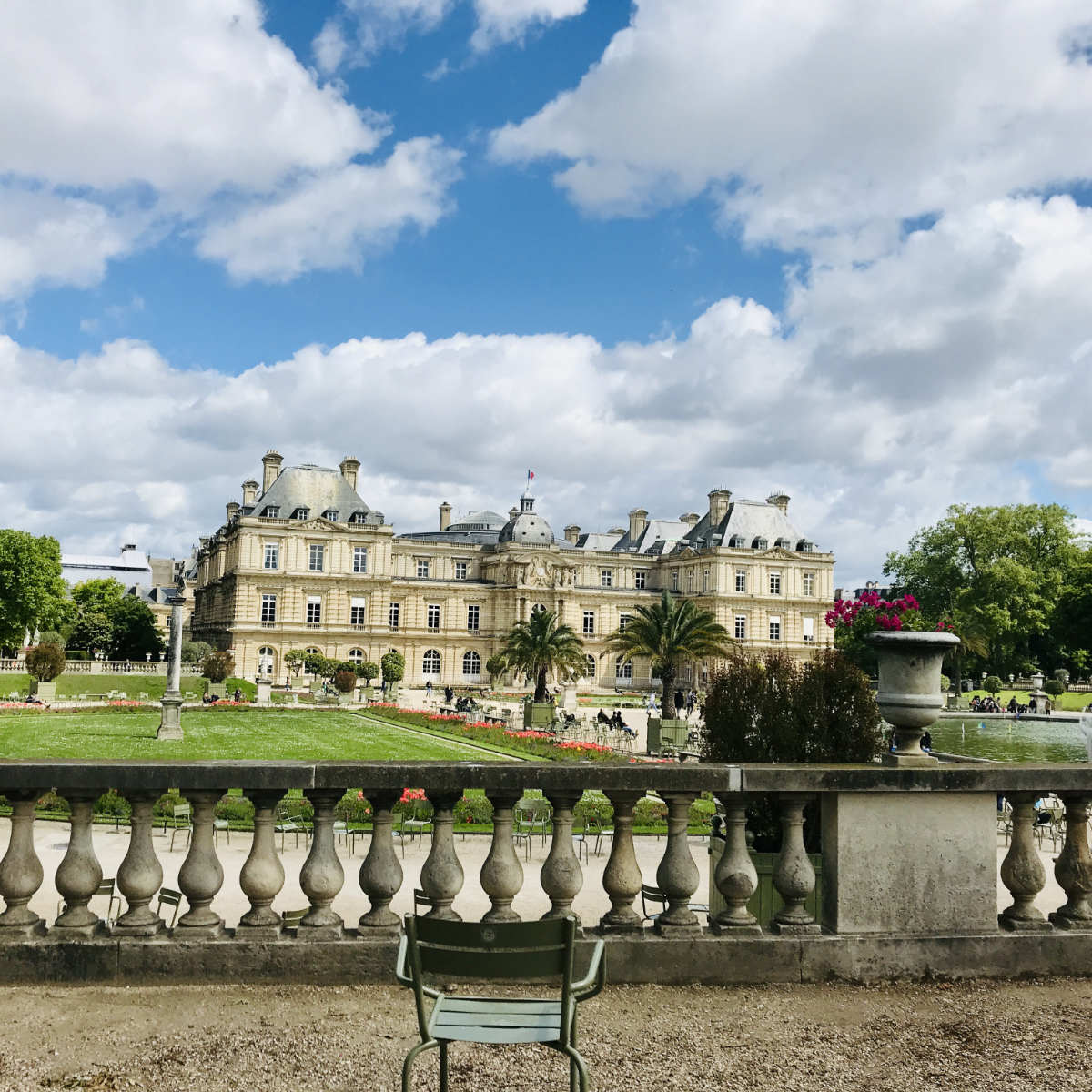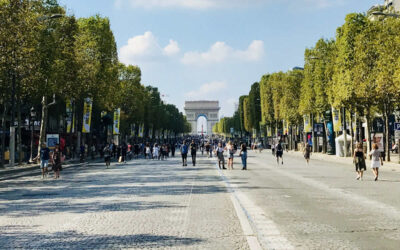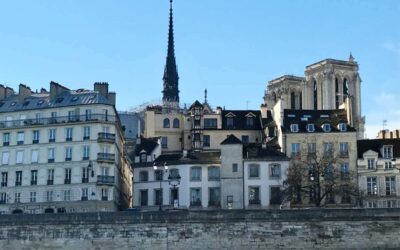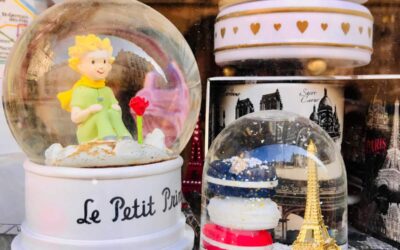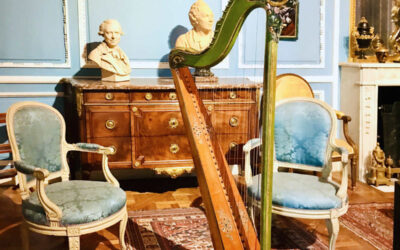Paris has plenty of lush spots to picnic and people-watch. But the Jardin du Luxembourg? It is in a class of its own. Nestled in the 6th arrondissement, right between the Saint-Germain-des-Prés and the Latin quarter, this is in one of the most exclusive neighborhoods of the city.
And for the locals, the Jardin du Luxembourg is their neighborhood backyard. It is called the “Luxembourg Gardens” in English, but this place is more than just a regular old park.
The Jardin du Luxembourg is like a garden museum (but without the “Do Not Touch” signs). As you wander through, you’ll stumble upon monuments galore, each one whispering secrets from the past.
It’s almost like taking an elegant stroll through history, with a side of some of the poshest neighbors and greenery enthusiasts in Paris. So let’s explore and find out the most interesting facts about the Jardin du Luxembourg, shall we? Allons-y!
- 1. The Gardens were created by Queen Marie de Medicis.
- 2. Planting began in 1612.
- 3. There was a convent in the way.
- 4. Marie de Médicis never saw it finished.
- 5. Andre Le Notre began working on the garden in 1635.
- 6. The Palace and Gardens were inherited by the Duke of Orleans.
- 7. A portion of the Gardens were sold in 1778.
- 8. During the Revolution, the lands of the Carthusian convent were requisitioned for the Gardens
- 9. It is 22.45 hectares in size.
- 10. The gardens have a French part and an English part.
- 11. The Marie de Medicis fountain is at one end of the gardens
- 12. A monument is dedicated to Eugene Delacroix
- 13. It briefly became a prison during the French Revolution.
- 14. Napoleon moved into the Palais du Luxembourg in 1799.
- 15. There are 20 sculptures of Queens around the Grand Bassin.
- 16. An assembly moved into the Palace, and it became the House of Peers in 1814.
- 17. The President of the Senate lives in the Petit Luxembourg.
- 18. Executions were held here during the 1871 Paris Commune riots.
- 19. A small version of the Statue of Liberty is kept in the gardens.
- 20. Look for the broken chain art installation.
- 21. There is an Orangerie in the gardens.
- 22. The Musée du Luxembourg is open to visitors.
- 23. Events were held here during the 1900 Summer Olympics.
- 24. It was bombed during WWI.
- 25. Several artists painted the Luxembourg gardens.
- 26. During WWII it was used as a parking lot.
- 27. The Gardens are free to enter.
- 28. Visitors are not allowed to sit on the grass.
1. The Gardens were created by Queen Marie de Medicis.
When King Henri IV died in 1610, his Queen Marie de Médicis became a widow, she decided she had enough of the Palais du Louvre. And she was not that impressed with the Palais des Tuileries either.
Instead she bought the hotel particulier (private mansion) called the “Luxembourg” estate in 1612 and commissioned the construction of a new royal palace from the architect Salomon de Brosse, inspired by the Pitti palace in her native Florence, Italy.
The 8 hectares of land that surrounded the residence would become part of the Jardin du Luxembourg, inspired by the vast Florentine garden that she dreamed of.
2. Planting began in 1612.
Plantations at the new Jardin du Luxembourg began in 1612, the day after the purchase of the land. As Queen and regent for her underage son Louis XIII, Marie hired the best architects and gardeners of the day.
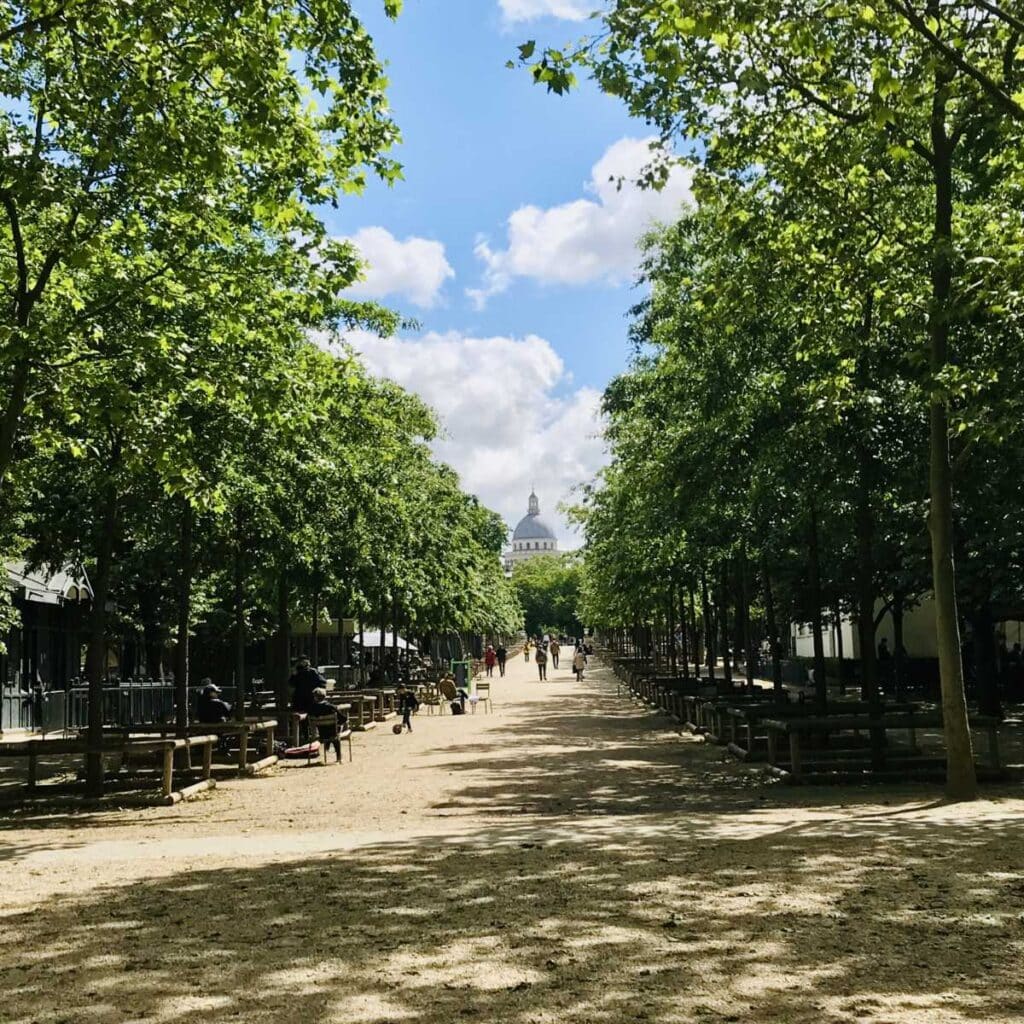
3. There was a convent in the way.
One of the problems that Marie de Medicis ran into was that the gardens in front of the new palace but could not be extended since a convent stood in the way of one of the walls.
The Carthusian convent stood a short distance away on the south side of the gardens, leaving the Luxembourg gardens only room on the west side.
4. Marie de Médicis never saw it finished.
The site was not completed in 1631 when Marie de Médicis was exiled on the orders of her son, the King.
Louis XIII had to strengthen his position as sovereign in the face of the omnipresence of the Habsburgs both politically and religious and family. Never close with his mother, the King exiled the Dowager Queen, following the advice of his advisor Cardinal Richelieu (of Alexandre Dumas’s 3 Musketeers‘ fame.)
5. Andre Le Notre began working on the garden in 1635.
In 1635, the great architect André Le Nôtre started working at Jardin du Luxembourg, trying to arrange the desired grand perspective towards the south.
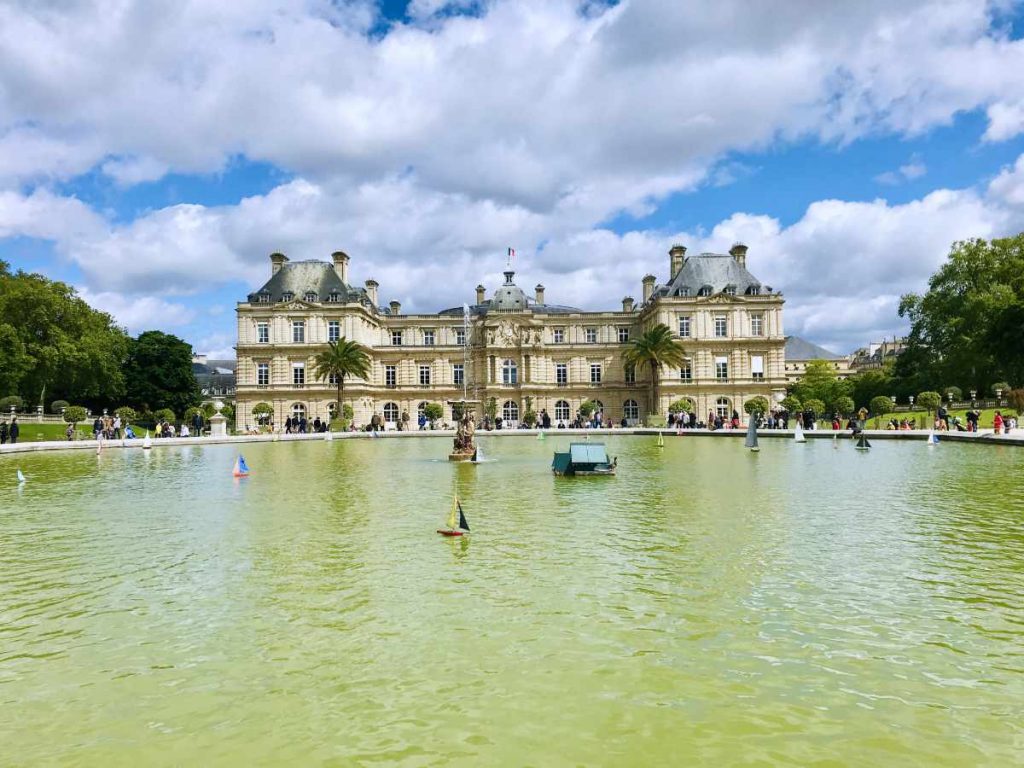
He would go on to design the gardens at the Palais de Versailles, Château de Chantilly and Chateau de Vaux le Vicompte. However, due to the troublesome convent that was still in place, Le Notre was not able to see through on his vision.
6. The Palace and Gardens were inherited by the Duke of Orleans.
Marie de Médicis died in 1642 andbequeathed the estate to her favorite child, her second son Gaston Duke of Orléans, younger brother of the King.
This is why on the building of the Palace du Luxembourg, you can see the words “Palais d’Orléans” engraved. Eventually, the Luxembourg Palace and its garden changed hands many times, remaining within the various branches of the royal family.
7. A portion of the Gardens were sold in 1778.
In 1778 the Luxembourg property was owned by the Count of Provence, brother of King Louis XVI (who was married to Marie-Antoinette).
It was significantly damaged, and to finance the restoration work he sold the western part of the garden, which included the Allée des Philosophes, frequented by philosopher Jean-Jacques Rousseau, and the Promenade des Soupirs dedicated to lovers.
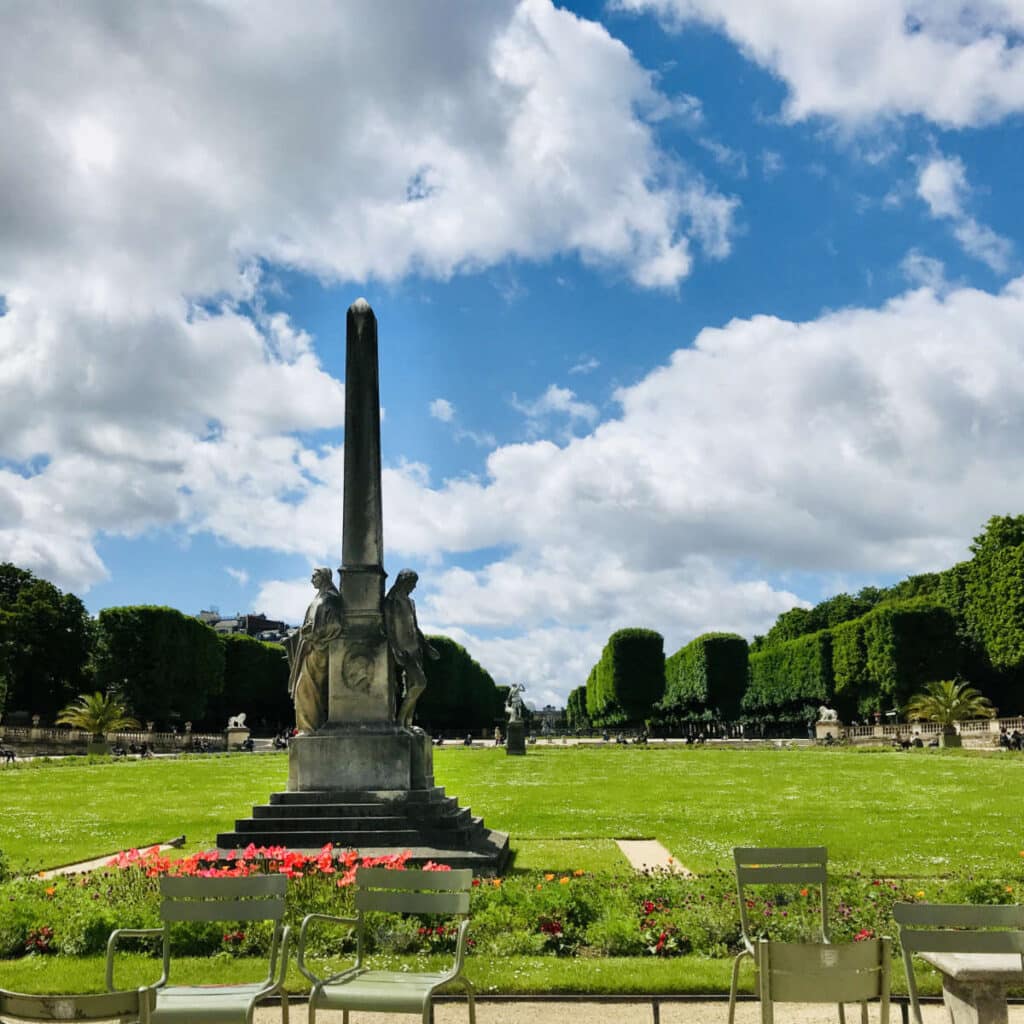
8. During the Revolution, the lands of the Carthusian convent were requisitioned for the Gardens
During the 1789 French Revolution, the Carthusian convent was finally requisitioned by the revolutionaries looking to make a large garden for the people.
The convent and the wall that obstructed the perspective of the palace was demolished, and the 26 hectares owned by the monks are annexed. In addition, the land lost a few years earlier to the west was recovered to the south.
9. It is 22.45 hectares in size.
Having acquired significant pieces of land in the aftermath of the revolution, the Luxembourg Gardens grew to 22.45 hectares.

Today it is considered the “backyard of local Parisians”.
10. The gardens have a French part and an English part.
French-style gardens have a very manicured and structural side, while English-style gardens are more looser and freer. The Jardin du Luxembourg tries to cover both styles, with the main portion in the French style facing the palace, while the outskirts are in more of a English style.
11. The Marie de Medicis fountain is at one end of the gardens
Marie de Medicis may never have seen the completed Jardin du Luxembourg, but the Fontaine Médicis alongside along the Rue de Médicis bears her name. It is a fountain hidden from the crowds, that remains a popular place for reflection.
12. A monument is dedicated to Eugene Delacroix
Legendary French artist Eugène Delacroix lived nearby and visited the gardens often, since he was working on the Assemblée Nationale and the Church of Saint Sulpice that are all the same neighbourhood.

A Monument to Eugène Delacroix lies near the Petit Luxembourg, as a dedication to him.
13. It briefly became a prison during the French Revolution.
During the Revolution, the palace was transformed into a prison where politicians and hundreds of other prisoners were detained there before their executions.
The Luxembourg garden was abandoned, only frequented by the families of prisoners who tried to communicate with them.
14. Napoleon moved into the Palais du Luxembourg in 1799.
On November 9, 1799 a coup d’état by a French general would usher in a new era after the revolution. Napoleon Bonaparte came to power as First Consul of France and moved into the Luxembourg palace.
15. There are 20 sculptures of Queens around the Grand Bassin.
The “Queens of France and Illustrious Women” are a series of twenty sculptures displayed in the Luxembourg Gardens in the Terrasse des Reines (terrasse of the Queens).
They feature some of the most famous women in France, to go along with the series of “Illustrious Men” that were built around the Louvre Palace at the same time.

The women whose statues were erected in the 19th century include (from north-east to west):
- Saint Bathilde (630-680) – Queen of France.
- Bertha (720-783) – Queen of France.
- Mathilde (1031-1083) – Duchess of Normandy, wife of William the Conqueror.
- Saint Genevieve (423-512) – Patron saint of Paris.
- Mary Stuart (1542-1587) – Queen of France (also known as Mary Queen of Scots).
- Jeanne d’Albret (1528-1572) – Queen of Navarre, mother of French King Henri IV.
- Clémence Isaure – Medieval founder of the Floral Games Academy in Toulouse during the 15th century.
- Anne-Marie-Louise d’Orléans (1627-1693) – Duchess of Montpensier, a royal heiress who died at Palais du Luxembourg.
- Louise of Savoy (1476-1531) – Regent of France for her son King François I.
- Marguerite d’Anjou with her son Édouard (1429-1482) – Queen of England, and disputed Queen of France during the 100 Years war.
- Laure de Noves (1310-1348) – muse of Italian poet Pétrarque and grandmother of French writer Marquis de Sade.
- Marie de Medici (1573-1642) – Queen of France, creator of the Luxembourg gardens.
- Marguerite d’Angoulême (1492-1549) – Queen of Navarre, sister of King François I.
- Valentine of Milan (1370-1408) – Duchess of Orléans, grandmother of future King Louis XII.
- Anne de Beaujeu (1460-1522) – Regent of France for her brother Charles VIII of France.
- Blanche of Castile (1188-1252) – Queen of France, granddaughter of Eleanor of Aquitaine and Regent for her son the future Saint King Louis IX
- Anne of Austria (1601-1666) – Queen of France, Regent for her son Sun King Louis XIV.
- Anne of Bretagne (1477-1514) – Queen of France, defender of the Duchy of Brittany.
- Margaret of Provence (1219-1295) – Queen of France, wife of Saint King Louis.
- Saint Clotilde (465-545) – Queen of France, wife of Clovis I, and one of the most well-known saints in France.
You can also see a statue of Diane the Huntress in the gardens, in keeping with the theme of strong females.
However, you won’t see French icon Joan of Arc, as her statue was deemed too fragile and important. She was instead moved to the safety of the Louvre museum.
16. An assembly moved into the Palace, and it became the House of Peers in 1814.
Napoleon installed an assembly in the Palace during his reign. In 1814 after Napoleon’s exile, the Palais du Luxembourg became the “House of Peers”.
The palace continues to hold the assembly of the French Senate (Le Sénat). These days, it remains a government building only open to visitors during the annual Journées du Patrimoine.
17. The President of the Senate lives in the Petit Luxembourg.
The Petit Luxembourg or “Hôtel de la Présidence” has been the official residence of the President of the French Senate since 1825.
It is in the Luxembourg gardens, right next to the Palace off of rue de Vaugirard.
18. Executions were held here during the 1871 Paris Commune riots.
After the Paris Commune riots on June 4, 1871, some of the protestors were shot at the foot of the Terrasse des Reines. A plaque is placed in their honor by the Senate on June 4, 2003.
19. A small version of the Statue of Liberty is kept in the gardens.
There are more Statues of Liberty in France than in the U.S. The largest and most famous is on an island in the middle of the Seine and looks towards her sister statue in New York.
However, there is a smaller statue of Liberty at the Luxembourg gardens as well. It sits a corner, off of the main path near the Orangerie.
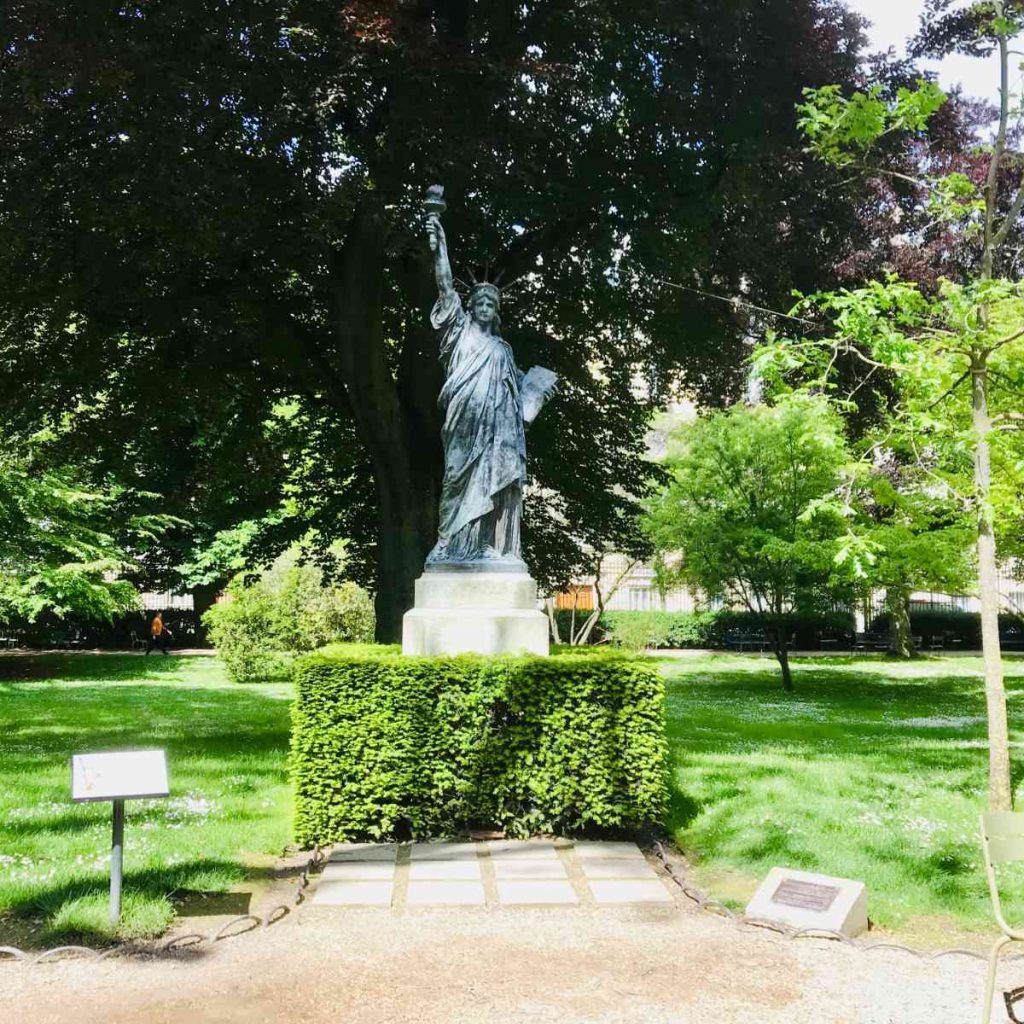
20. Look for the broken chain art installation.
In the Jardin du Luxembourg, you will find a broken chain sculpture that sits as an homage to the struggles of the slaves of the French colonies. It was designed by artiste Fabrice Hyber in 2007. A sad reminder of France’s complicity in the transatlantic trade.
21. There is an Orangerie in the gardens.
A large Orangerie dating back to 1839 sits at one end of the Luxembourg gardens. It houses a collection of 180 plants including citrus fruits, date palms, oleanders and pomegranates.
Some bitter orange trees, which are in the French-style part of the garden are estimated to be between 250 and 300 years old.
22. The Musée du Luxembourg is open to visitors.
A small museum is located on the premises of Luxembourg gardens. The original museum opened in 1750 as an art gallery, even before the Louvre. It was on the same site as the royal gallery of Marie de Medicis.
It was closed in 1780, and then reopened again at various points in the 19th century. Originally the artists chosen were contemporary artists whose work was due to join the Louvre Museum 10 years after their death.
The current museum features temporary art exhibitions and prices vary depending on the exhibition.
23. Events were held here during the 1900 Summer Olympics.
In the current era, the Olympics were first invented and organized by a Frenchman named Pierre de Coubertin, who organized the first games in 1896 in Greece and the 2nd games in 1900 in his home country of France.
The tennis courts inside the Jardin du Luxembourg was used to host the matches during the 1900 Summer Olympics.
24. It was bombed during WWI.
Towards the end of WWI in 1918, the Luxembourg gardens were hit during a raid by German planes. A shell also exploded in the gardens during the war.
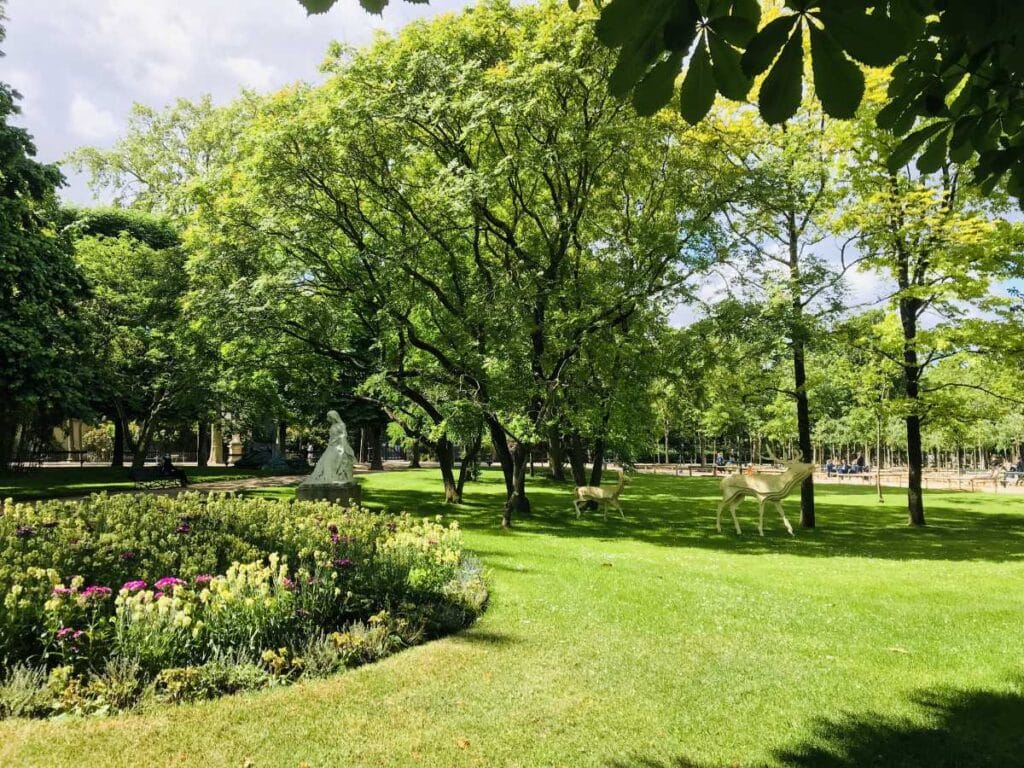
25. Several artists painted the Luxembourg gardens.
Several famous French artists like Henri Rousseau, Vincent van Gogh, and Eliseu Visconti, have all painted landscapes featuring the Jardin du Luxembourg.
It remains a place of inspiration in Paris for artists, writers, and other creatives.
26. During WWII it was used as a parking lot.
During the occupation of Paris, the Luxembourg Palace became the headquarters of the staff of the 3rd German air fleet. Blockhouses under the garden were built (one to the east, the other to the west of the palace) and barbed wire installed in the park.
As such, the Luxembourg gardens were partly closed to the public as they served as a parking lot for enemy vehicles.
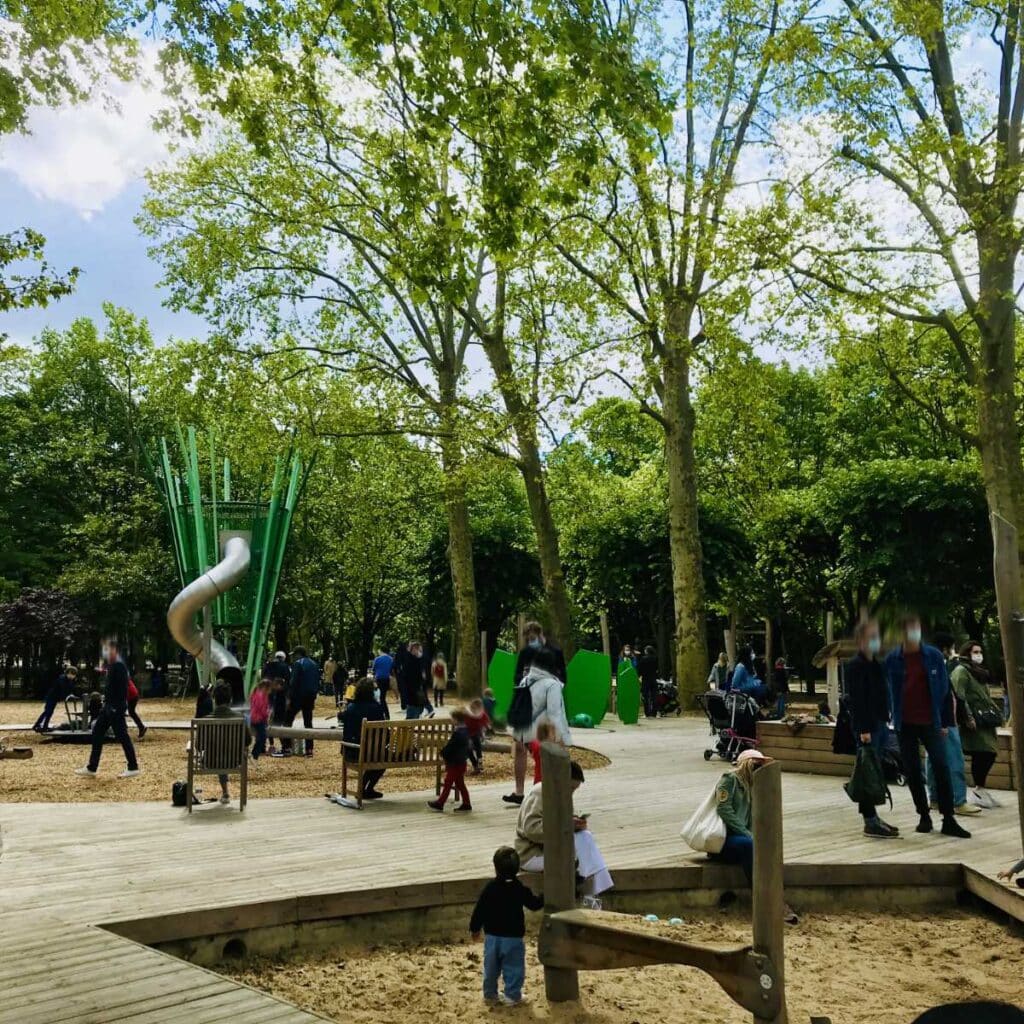
27. The Gardens are free to enter.
The Jardin du Luxembourg is always free to enter, however there are certain play areas for children that do require a fee. In addition, there may be an additional charge when shows or sports events are held within the gardens.
Note, it does get quite busy on Wednesdays (when school is off) and weekends with French families living in the area.

28. Visitors are not allowed to sit on the grass.
As large and welcoming as the Jardin du Luxembourg is, visitors are not allowed to sit on the grass in most areas. Chairs are spread out across the garden instead, and all are invited to use them.

If you enjoyed that article, you may like to read more interesting facts about Paris. A bientôt!
